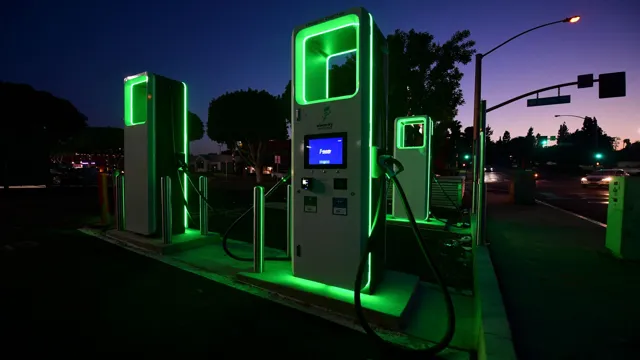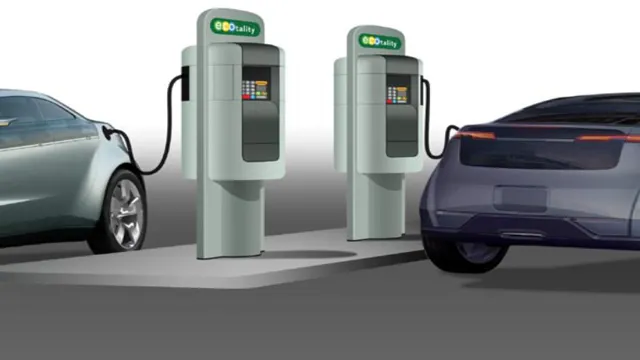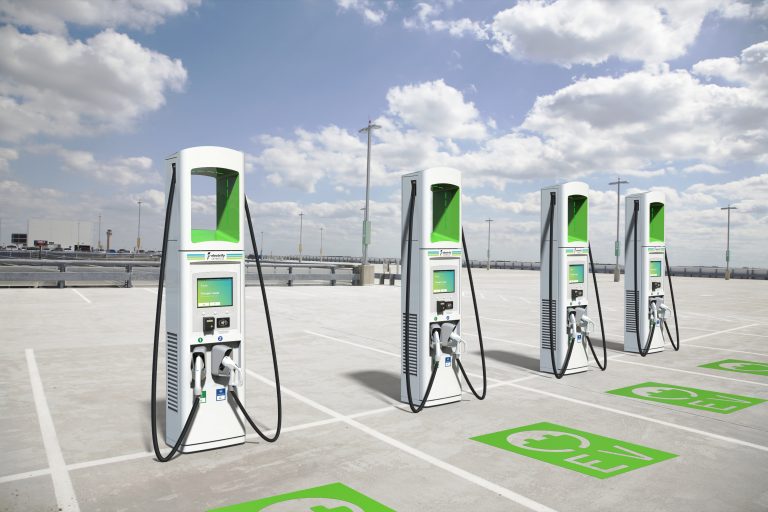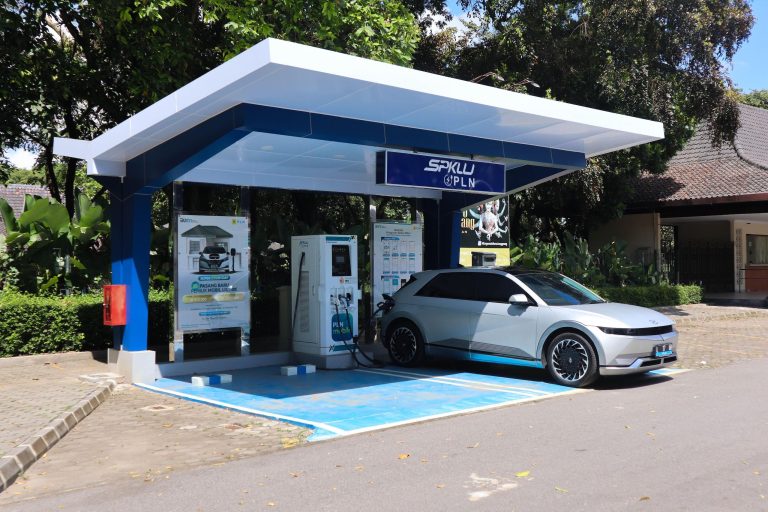Juice Up Your Ride: The Infrastructural Revolution of Electric Car Charging Stations
Electric cars have been around for a while, and despite the hype surrounding them, the infrastructure for charging them is still lacking. With more and more people switching to electric cars, the need for electric charging stations has become more pressing. Fortunately, governments, car manufacturers, and private companies are all working to address this issue.
In this blog, we will take a closer look at the electric car charging stations infrastructure, from the different types of charging stations to the advancements being made in this field. So, grab a cup of coffee and let’s dive in!
Current State of Electric Car Charging Stations
Electric car charging stations infrastructure has come a long way in recent years. As the demand for electric vehicles grows, so does the need for charging stations to support them. In some areas, the infrastructure is already well established, with numerous stations available at popular destinations such as shopping centers and airports.
However, in other areas, the infrastructure is lagging behind, leaving some electric vehicle owners struggling to find a charging station. The good news is that there are ongoing efforts to expand the infrastructure, with governments, private companies, and even individuals investing in building new charging stations. To ensure that electric vehicle adoption continues to grow, we need to see more support for the infrastructure and increased investment, so that charging stations are as easy to find and use as gas stations.
Ultimately, the goal is to create an electric vehicle charging network that is robust and reliable, allowing drivers to travel long distances without worrying about running out of battery power.
Statistics on Number of Charging Stations
Electric Car Charging Stations The number of electric car charging stations has been rapidly increasing in recent years. According to the International Energy Agency (IEA), there were approximately 3 million public and private charging stations worldwide as of 2020.
In the United States alone, there were over 100,000 public charging points as of August 2021, and it is projected to reach 500,000 by 2030. However, some areas, such as rural communities, still lack access to this infrastructure. The growing number of charging stations is a positive sign for the electric vehicle (EV) industry and is essential for the widespread adoption of EVs.
It provides drivers with the necessary infrastructure to travel longer distances, encourages more people to switch to electric, and helps reduce emissions. With the continued effort to expand charging infrastructure, the future looks bright for EVs.

Types of Charging Stations Available
Currently, there are various types of electric car charging stations available in the market. The most common types include Level 1, Level 2, and DC Fast Charging stations. Level 1 charging stations can be plugged directly into a regular power outlet and can provide up to 4 miles per hour.
Level 2 charging stations are more powerful and require a 240-volt outlet, which can charge a car up to 25 miles per hour. Finally, DC fast charging stations are the most powerful public charging stations available, allowing drivers to charge their cars in as little as 30 minutes for around 80% of their battery’s capacity. The current state of electric car charging stations may not be as widespread as traditional gas stations, but there has been a steady increase in their availability in recent years.
As more electric vehicles hit the road, we can expect to see more charging stations being installed, which will make it easier for drivers to charge their cars on long road trips.
Charging Standards and Speeds
When it comes to the current state of electric car charging stations, there are a few different charging standards and speeds to be aware of. The most common charging standard is CHAdeMO, which is predominantly used by Japanese car manufacturers like Nissan and Mitsubishi. However, more and more charging stations are now also offering the CCS charging standard, which is preferred by European and American car manufacturers like Audi and Ford.
Additionally, Tesla has their own proprietary charging system that is only compatible with their vehicles. In terms of charging speeds, there are three main levels: Level 1 (which uses a standard household outlet and is relatively slow), Level 2 (which is faster and requires a special charging station), and DC fast charging (which is the fastest option and typically requires a higher voltage and specialized equipment). It’s important to note that not all electric cars are capable of using all three levels of charging, so it’s crucial to check your vehicle’s capabilities before attempting to charge at a specific station.
Need for Expansion of Charging Infrastructure
As electric vehicles become more popular, the need for an extensive charging infrastructure becomes more pressing. Although it’s true that electric car owners can charge their cars at home, a lack of charging points on the road can cause anxiety for long-distance trips. Drivers need to know that they can travel without worrying about their car running out of power.
The expansion of electric car charging stations infrastructure is crucial for the success of electric vehicles. It’s not just a matter of adding more stations, but also ensuring that they are located conveniently and are available 24/ Currently, the infrastructure is insufficient, but with the right investments and planning, the situation can be improved.
Governments and businesses must work together to create a robust charging network, providing a seamless experience for drivers, and building the confidence of car owners to make the switch to electric. It’s time to realize that electric cars are the future, and the charging infrastructure must be expanded to keep pace with the growing demand.
Increase in Electric Car Sales and Usage
As electric car sales skyrocket, the need for a comprehensive charging infrastructure becomes more apparent. While some may worry about range anxiety, the overall benefits of electric vehicles cannot be ignored. Not only are they better for the environment, but they also save money in the long run.
However, without the proper charging infrastructure in place, it could be challenging for people to make the switch to electric cars. That’s why it’s crucial for governments and private entities to collaborate and invest in expanding charging stations throughout the country. Think of it like building gas stations along highways – this not only makes it easier for people to refill their cars but also increases the overall usability of electric cars.
By prioritizing the development of charging infrastructure, we can make electric cars more practical and encourage even more people to make the eco-friendly switch.
Benefits of Creating More Charging Stations
Electric cars are becoming more popular, and it’s important that charging infrastructure keeps up with demand. That’s why creating more charging stations is crucial. Not only would it make owning an electric car more convenient, but it would also help reduce the carbon footprint of transportation and promote sustainable living.
Additionally, expanding the availability of charging stations would create jobs and stimulate the economy through the construction and maintenance of these stations. It’s a win-win situation – we can promote environmentally-friendly transportation while also supporting economic growth.
Challenges to Expansion (Cost, Location, etc.)
The need for expansion of charging infrastructure is becoming more urgent as the number of electric vehicles on the road continues to grow. While there are many challenges to expanding charging infrastructure, including cost and location, the benefits of doing so are clear. As demand for electric vehicles continues to increase, it is essential that we have the necessary infrastructure in place to support this growth.
This includes having charging stations available in convenient locations, such as malls, parking lots, and other public areas. Additionally, expanding access to charging infrastructure can help address concerns around range anxiety, making electric vehicles a more viable option for consumers. While there are certainly challenges to expanding charging infrastructure, the benefits of doing so are clear, and it is essential that we continue to invest in this critical piece of infrastructure.
Solutions for Expanding Charging Infrastructure
Electric car charging stations infrastructure is critical for the widespread adoption of electric vehicles (EVs). To expand the infrastructure, industry leaders are coming up with innovative solutions. For instance, there are plans to transform streetlights into charging points.
This solution is cost-effective as it does not require additional infrastructure, and it offers convenience to EV drivers. Additionally, public-private partnerships (PPP) can be formed to install charging stations along highways or in remote areas. Governments can also relax regulations on home charging to encourage property owners to install EV chargers.
This approach is beneficial as it is affordable for individual EV owners and can accelerate the expansion of private charging infrastructure. Overall, a collaborative effort between government and private organizations can enhance the EV charging infrastructure, making it more accessible and convenient for EV drivers.
Government Initiatives and Incentives
One of the biggest hurdles in increasing electric vehicle adoption is the limited charging infrastructure. To address this issue, governments around the world have initiated various incentives to encourage the expansion of charging stations. In the United States, for example, the federal government has offered tax credits of up to 30% of the installation cost for businesses that install charging stations.
State and local governments have also provided grants and funding programs for charging infrastructure. Additionally, policymakers are working with private companies to establish a more reliable and convenient charging network. For instance, some cities have partnered with ride-share companies to create charging hubs for electric taxis.
The goal is to make charging more accessible and reduce range anxiety for EV drivers. With governments and private entities working together, the future looks promising for the expansion of charging infrastructure.
Private Sector Investment Opportunities
One of the biggest challenges facing the widespread adoption of electric vehicles (EVs) is the lack of charging infrastructure. While governments have made some progress in installing public charging stations, the private sector has a major role to play in expanding this network. There are a number of investment opportunities available for businesses looking to get involved, from installing charging stations in commercial and residential properties to offering subscription-based charging services.
There are also opportunities for innovative solutions, such as wireless charging technology that can be embedded in roads and parking spaces. By investing in charging infrastructure, businesses can play a key role in making EVs a more viable and accessible option for consumers, while also contributing to a cleaner and more sustainable future. So, if you’re looking for an opportunity to invest in the future of transportation, electric vehicle charging infrastructure is definitely worth exploring.
Conclusion: Importance of Charging Infrastructure for EV Growth
In a world where climate change is at the forefront of our minds, the need for electric car charging stations infrastructure has never been more critical. As the demand for eco-friendly transportation continues to rise, we must ensure that we have the necessary infrastructure in place to support it. Like the veins that pump life into our bodies’ electric car charging stations infrastructure is what propels us towards a greener, more sustainable future.
So, let’s put our best foot forward and charge ahead to electrify the world, one charging station at a time!”
FAQs
What is the current state of electric car charging station infrastructure in the United States?
The current state of electric car charging station infrastructure in the United States varies from state to state, with some states having a more developed infrastructure than others. However, overall, there are still not enough charging stations to meet the increasing demand for electric vehicles.
How long does it take to charge an electric car at a public charging station?
The time it takes to charge an electric car at a public charging station depends on the type and speed of the charging station, as well as the size of the car’s battery. Generally, Level 1 charging can take up to 20 hours, Level 2 charging can take between 3 and 8 hours, and DC fast charging can take as little as 30 minutes.
What types of electric car charging stations are available?
There are three types of electric car charging stations: Level 1, Level 2, and DC fast charging. Level 1 charging uses a standard household outlet and provides the slowest charge, while Level 2 charging requires a special charging station and provides a faster charge. DC fast charging is the fastest type of charging and requires specialized equipment.
How much does it cost to use a public electric car charging station?
The cost to use a public electric car charging station varies depending on the location and type of charging station. Some charging stations are free, while others charge per hour or per kilowatt-hour of electricity used. On average, the cost of public charging is around $0.28 per kilowatt-hour.





